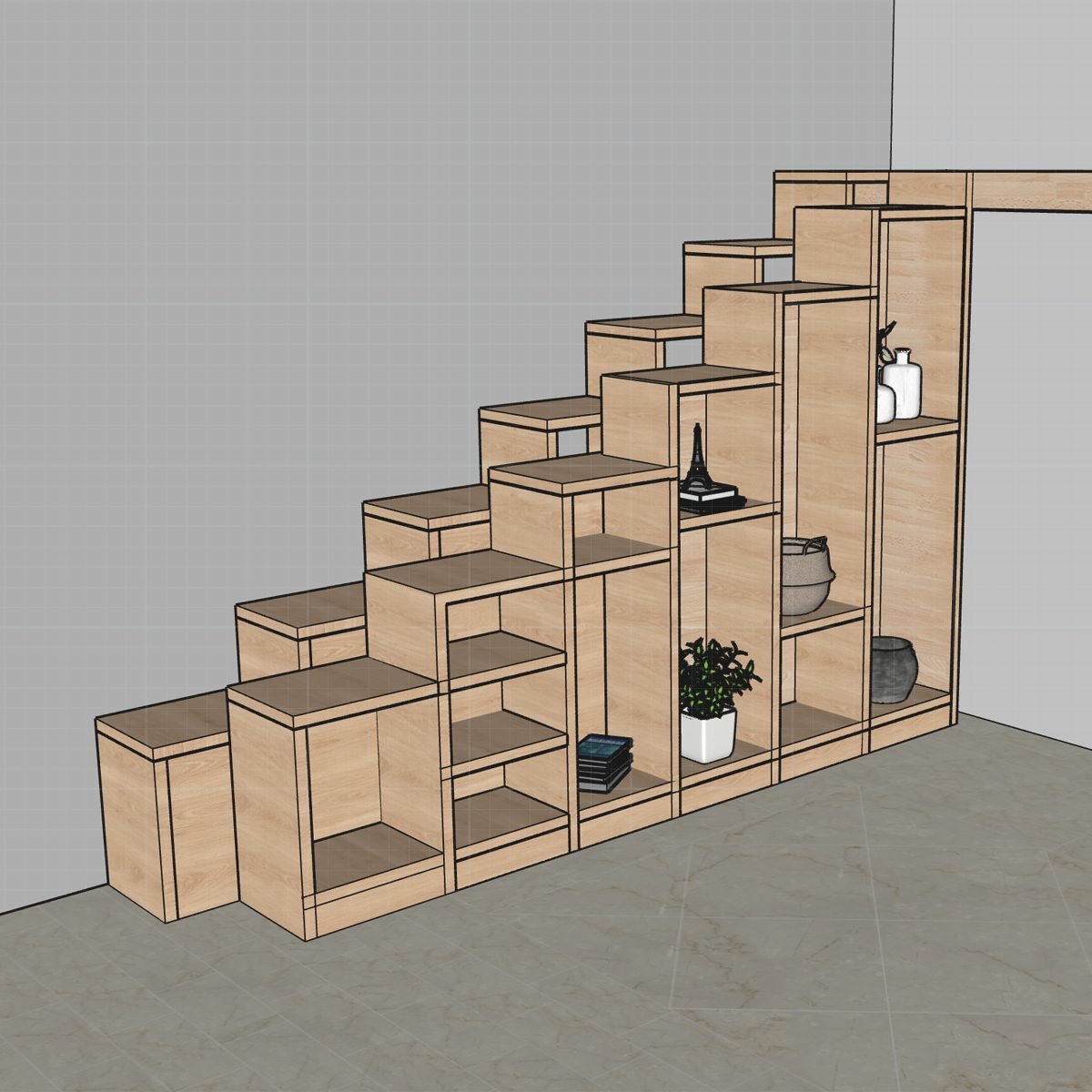Even though I’m a witch of sorts (a green-kitchen-nature-witch if we must label it), I love the idea of witch stairs. They’re wonderfully quirky, and the folklore surrounding them is quaint and amusing. And there’s something charming about their overall aesthetic.
But I hate to break it to you: I can walk up witch stairs just fine.
What Are Witch Stairs?

Witch stairs, aka ship ladders or alternate-tread stairs, are a unique form of staircase characterized by a steep slope and alternating treads.
Unlike a regular staircase where each step is the same size, witch stairs feature treads half the width of a standard stair, creating a practical space-saving solution. They’re a common sight in older homes in the northeastern United States.
Witch stairs save space because of the steep treads, so they’re a smart option for small spaces. That was their original purpose.
How Did Witch Stairs Get Their Name?
Now, why would something as benign as a staircase get such a creepy moniker?
According to social media posts, witches supposedly couldn’t walk up this style of stairs. There are lots of variations of the story, all with the same general theory. Not surprisingly, that theory has been debunked.
Are Witch Stairs Dangerous?
It depends. The alternating treads can be confusing, increasing the risk of missteps and falls. As such, they may not be suitable for homes with young children, the elderly or anyone with mobility issues. Or folks like me who are just plain clumsy!
And after a lifetime of walking up and down regular stairs, suddenly transitioning to witch stairs can be problematic, even with handrails to help.
Witch Stairs and Modern Building Codes
Modern building codes for staircases were developed with safety in mind, taking into account factors like step height and depth, railings and overall steepness. Because witch stairs are steeper and feature alternate treads, they often don’t comply with these codes, especially safe rise and run dimensions.
So while you may come across witch stairs in older homes, they’re typically not permitted in new construction without a special variance. It’s worth noting some jurisdictions may allow witch stairs in specific contexts, like tight spaces where a traditional stair cannot fit. But it’s rare.
The Practical Uses of Alternate-Tread Staircases
Alternate-tread staircases are clever choices for lofts or attics, where a full-sized staircase might not be feasible, but a ladder is unsightly and dangerous.
The space beneath these quirky stairs can be transformed into a unique storage area. You can build pull-out drawers or small closets that fit perfectly under each step. This clever use of space can add functionality to areas that would otherwise be wasted.
Are Witch Stairs More Difficult to Clean?
No. If you own a handheld vacuum, you’ll find it’s no different than cleaning a standard staircase.
Did you miss our previous article...
https://rsssuperfeeds.com/life-hacks/the-best-portable-solar-panels-to-offgrid-power






